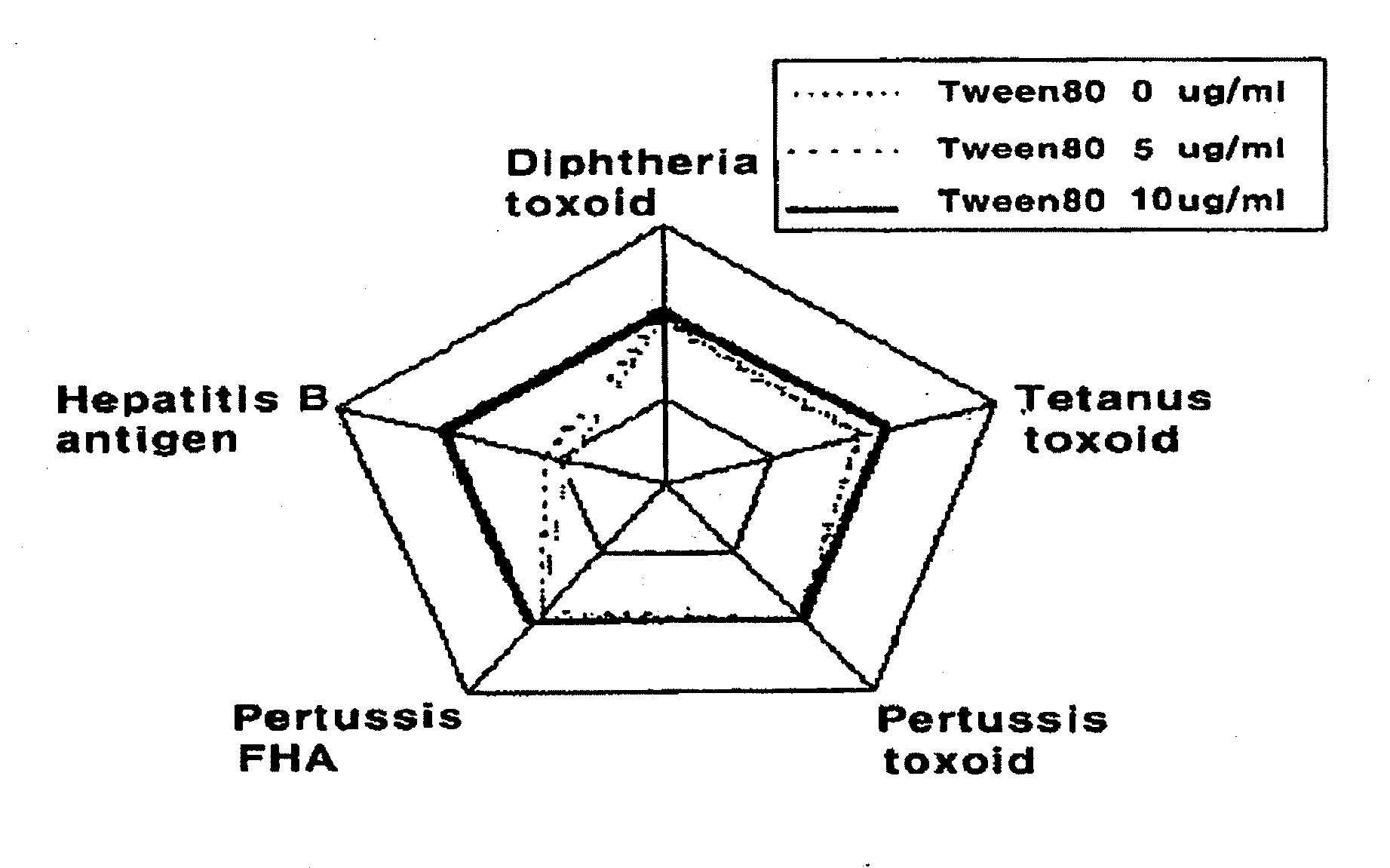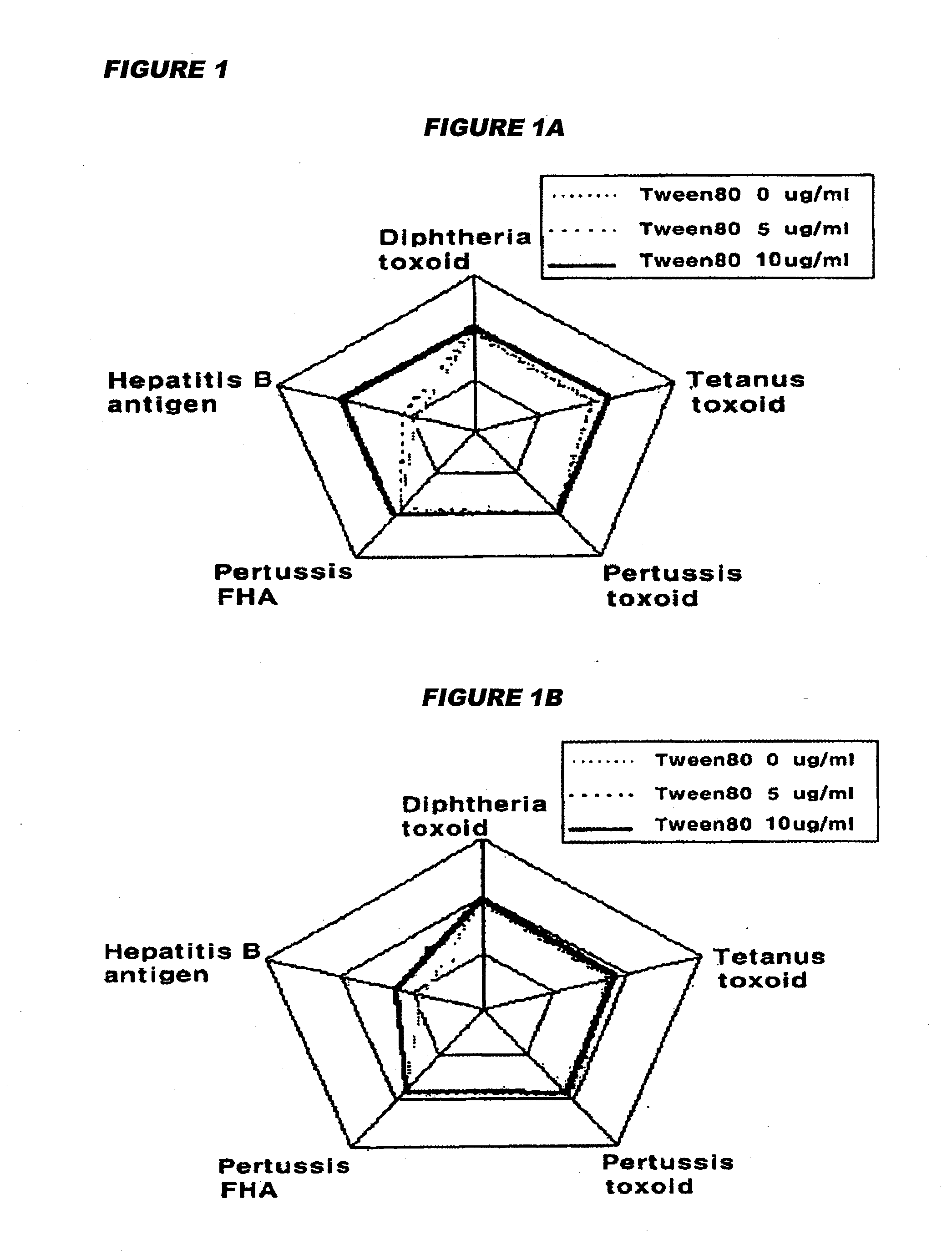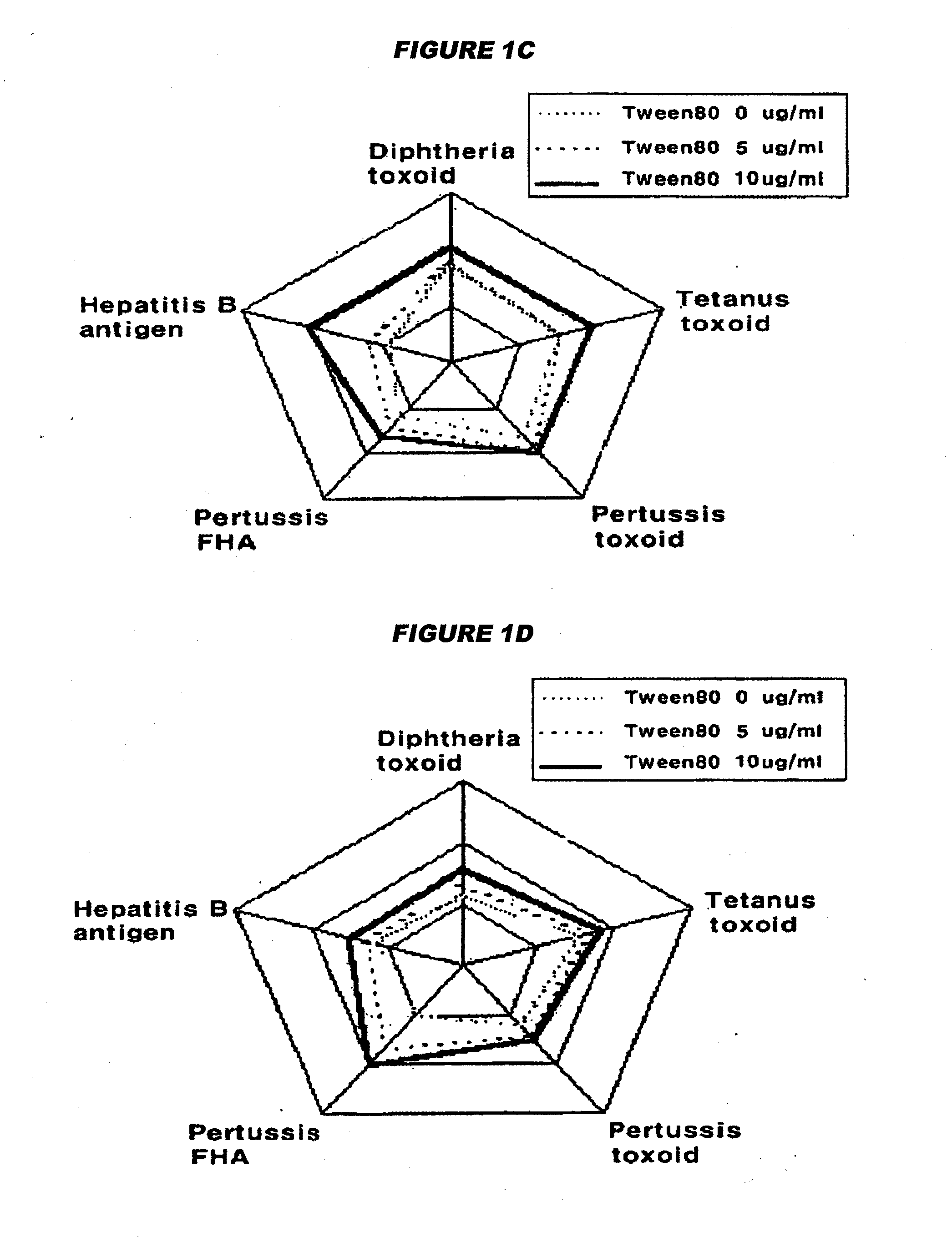Manufacture of vaccines that contain both hepatitis b virus surface antigens and surfactant
a technology of surface antigen and surfactant, which is applied in the field of manufacturing combination vaccines, can solve the problems of adding detergents, affecting one, and difficulty in manufacturing, and achieves the effect of reducing the risk of contamination and thus the risk of losing the whole combination vaccine after i
- Summary
- Abstract
- Description
- Claims
- Application Information
AI Technical Summary
Benefits of technology
Problems solved by technology
Method used
Image
Examples
Embodiment Construction
HBsAg Expression and Purification
[0177]A H.polymorpha yeast host encoding HBsAg [107,108] was prepared. 100 litres of medium was prepared in a 300 litre fermenter and inoculated with the yeast. Fermentation was continued until the cells were present at 100 grams / litre. At this stage, as the host is methyloptrophic, methanol was added, and fermentation was stopped. The volume of the final culture was 160-170 litres. Cells were harvested from the culture medium by centrifugation.
[0178]Rather than adding non-ionic surfactants to the HBsAg after purification, as described in references 3 and 4, surfactant was used during purification of the protein. In particular, the harvested yeast cells were suspended in phosphate buffer containing 0.1-0.2% polysorbate 20 and 10 mM EDTA. The suspension was cooled and disrupted using a high pressure liquid homogenizer.
[0179]The homogenized cell suspension was then clarified by centrifugation. After addition of NaCl to the supernatant, polyethylene gly...
PUM
| Property | Measurement | Unit |
|---|---|---|
| concentration | aaaaa | aaaaa |
| concentration | aaaaa | aaaaa |
| concentration | aaaaa | aaaaa |
Abstract
Description
Claims
Application Information
 Login to View More
Login to View More - R&D
- Intellectual Property
- Life Sciences
- Materials
- Tech Scout
- Unparalleled Data Quality
- Higher Quality Content
- 60% Fewer Hallucinations
Browse by: Latest US Patents, China's latest patents, Technical Efficacy Thesaurus, Application Domain, Technology Topic, Popular Technical Reports.
© 2025 PatSnap. All rights reserved.Legal|Privacy policy|Modern Slavery Act Transparency Statement|Sitemap|About US| Contact US: help@patsnap.com



